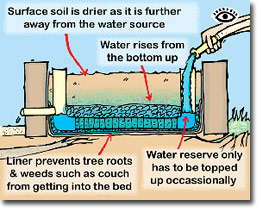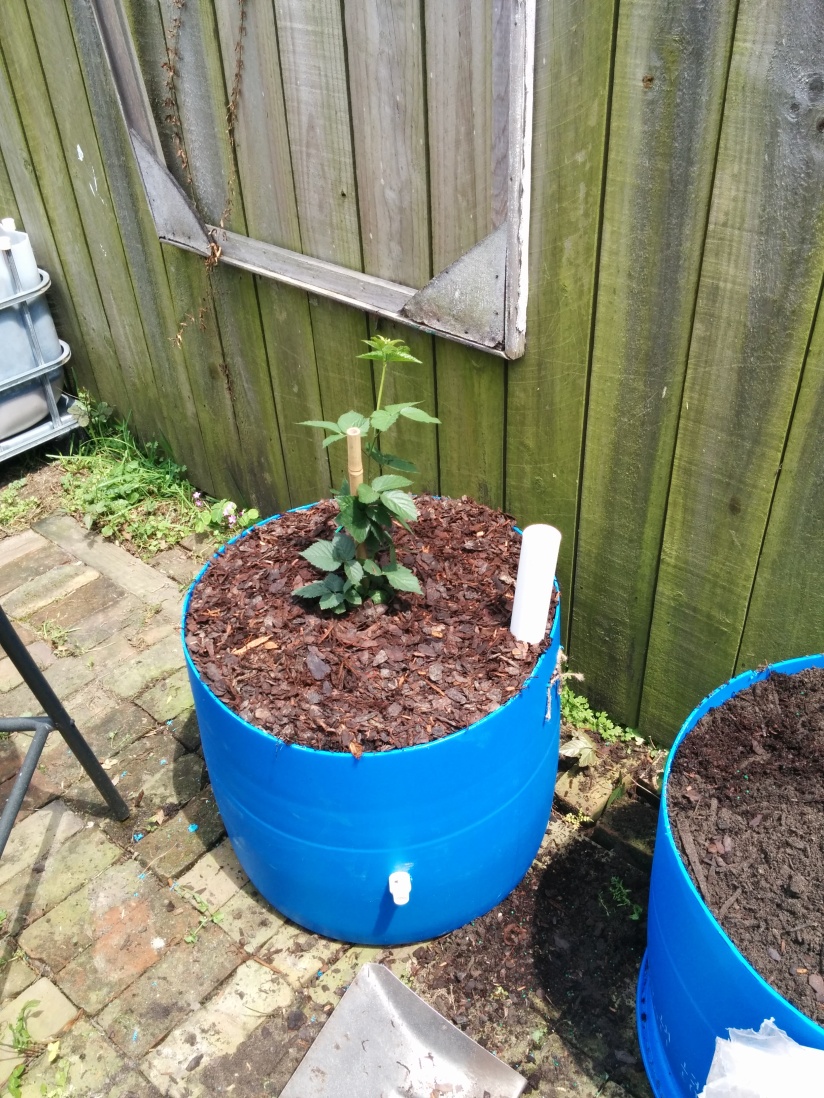This video tutorial explains how to make a self watering barrel.
One of the common problems novice gardeners have is knowing how much to water their plants.
Too little water and they wither and die, too much water and the root can begin to rot. Either way the result is bad and means reduced crops which is a really big problem, especially if you are relying on them for food.
This watering barrel which you can make your self with simple tool and techniques allow the water to ‘wick’ from a reservoir at the bottom of the barrel. The design also incorporates an overflow for the reservoir about 0.3m (12 inches) from the bottom to prevent the soil becoming too wet (waterlogged).
Other features is that the plant is raised above ground level and can have netting added to prevent animal eating or destroying crops.
The inlet pipe can be connected to a rain water collection system without fear of over watering.
the only thing i might add to this design is bare copper wire around the outside of the barrel to deter snails and slugs form entering the pot. The copper itself can also treat some micro-nutrient problems plants may develop.




You must be logged in to post a comment.